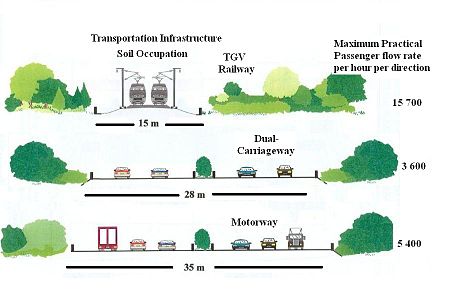Sustainable urban infrastructure
Not solely based on evaluating utilities, sustainability efforts in urban infrastructure seek to combat global warming and municipal waste, as well as encourage economic prosperity.
Socioeconomic implications of these efforts often involve policy and governance in the implementation of sustainable infrastructure, and their variation results in different programs sized on national, regional, or more local scales.
[8] Challenges resulting from increasing population growth have generated a need for sustainable infrastructure that is high performing, cost-effective, resource-efficient and environmentally-friendly.
Instead of just focusing on housing and space, experts now incorporate ideas regarding urban resource metabolism, the interconnectedness of citizens, and the complex vulnerabilities that cities develop over time.
However, a lack of consistent government regulation and socioeconomic conditions continue to hinder attempts to establish a resilient and sustainably motivated network of cities across Africa.
More efficient land development, also carried out by an integrated group of bureaucratic bodies throughout Australia, and multiuse utility systems can maximize the social, environmental, and economic benefits of a country regardless of whether the population is increasing or decreasing.
These organizations advocate environmental protocols, and inclusion of ecological and social indicators and factors in decision making at the earliest possible stage.
In particular, this integration further reduces duplication and waste, especially e-waste and greenhouse gas emissions that were a concern under Kyoto Protocol targets that Canada committed to achieve.
The Circular Economy Policy has already begun to address this issue by enforcing repeated analysis and reuse throughout a product's entire life cycle.
Thirdly the government will allow competition and the mechanism of eliminating winners and losers among enterprises to enhance the ability to produce and operate goods.
City areas along the coast particularly suffer from large socioeconomic gaps, high density slums, and poor development planning.
However, in order to effectively create a wholly resilient society, the project stresses that the design process must be shared between government initiatives, the commercial sector, and public opinion.
This mutual relationship is reflected in the project philosophy, which viewed cities as an ecosystem of the aforementioned priorities shared effectively among different levels of society in order to thrive.
[24] Self-healing technology could protect surrounding paving and foundations from damage when items of infrastructure are impacted, which can reduce maintenance and improve the sustainability of urban developments.
[7] To reduce overall footprint, transportation infrastructure requires a localized consumer base made accessible by integrative design within neighborhoods.
Once again, cost-effectiveness is important, in that maintenance costs must be exceeded by benefits (monetary and/or societal), but oftentimes state-owned public transportation suffers significant losses.
[28] A common governance and administration method subjected to studies, such as from the Complex and Sustainable Urban Networks (CSUN) Laboratory at the University of Illinois at Chicago, is the control of resource supply and demand.
If the cities reduced resource consumption on a social and technical basis, and adopted energy efficient practices, the projected footprint improved dramatically.

